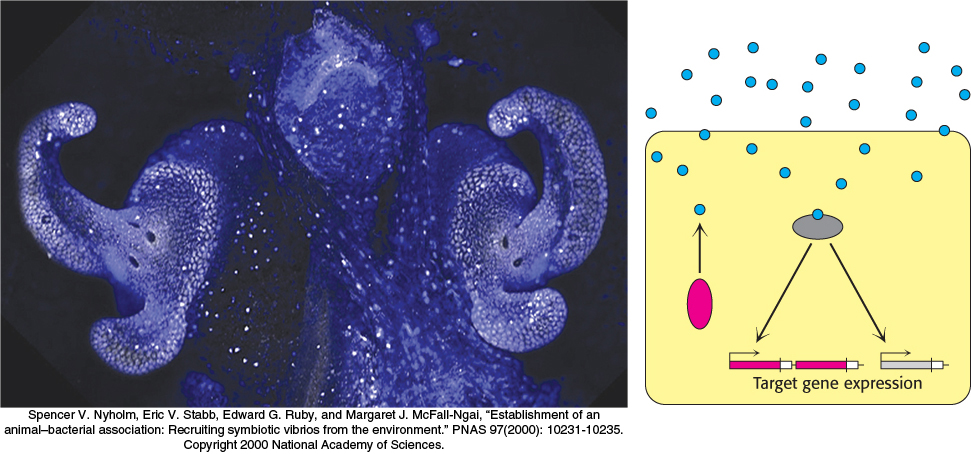
Bacteria respond to changes in their environments. A micrograph of the light organ of a newly hatched squid (Euprymna scolopes) is shown on the left. The light spots are due to colonies of the bacteria Vibrio fischeri that live symbiotically within these organs. These bacteria become luminescent when they reach an appropriately high density. The density is sensed by the circuit shown on the right in which each bacterium releases a small molecule into the environment. The molecule is subsequently taken up by other bacterial cells, which start a signaling cascade that stimulates the expression of specific genes.